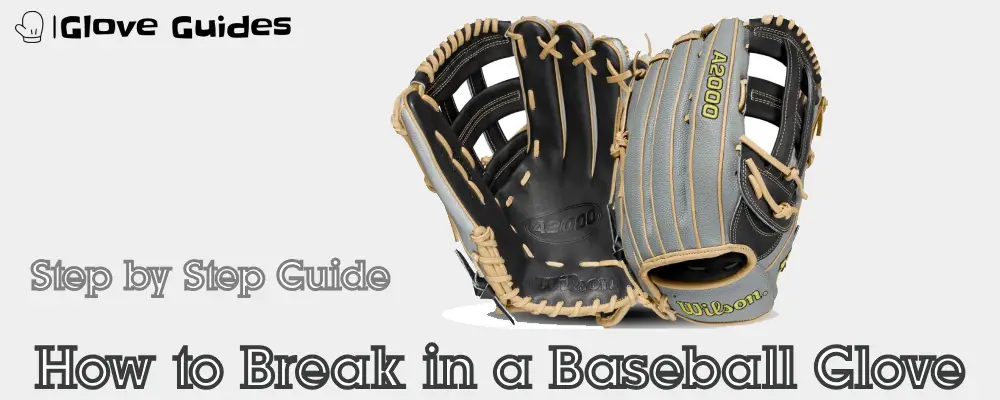
Selecting the perfect baseball glove is crucial for players aiming to perform at their best. It’s not just about style, but a key player in your game. A good glove can make a difference in catching that fly ball or making a solid throw. So, let’s explore the specifics and focus on something difference between Left-Hand & Right-Hand Baseball Gloves.
Ever wondered why some gloves look a bit different? Well, it’s not just about left or right, it’s about getting the glove that fits like a hand in a glove should! Today, we’re unraveling the mystery behind left-hand and right-hand baseball gloves. Get ready to make an informed choice for a glove that suits your game like a pro.
I. The Basics of Baseball Gloves
A. Purpose of a Baseball Glove
Baseball gloves aren’t just accessories; they’re tools that help players catch and control the ball. They serve as a shield, making plays easier and keeping hands safe from hard throws and fast pitches.
- Protection: Shields hands from hard hits and fast throws, preventing injuries.
- Control: Aids in catching and controlling the ball with precision.
B. Key Components of a Baseball Glove (Webbing, Pocket, Heel, etc.)
Understanding the different parts of a glove is crucial for players. The webbing, pocket, and heel each play a role in how the glove performs on the field.
- Webbing: The connected leather strips between the fingers; comes in various styles affecting ball grip.
- Pocket: The deep, concave part where the ball is caught and held securely.
- Heel: The lower part of the glove’s palm, providing stability and structure.
C. Significance of Selecting the Correct Glove for Optimal Performance
Picking the right glove isn’t just about size or style. It directly impacts a player’s performance on the field, making it crucial to choose wisely.
- Fit Matters: A well-fitted glove enhances control and comfort, improving overall performance.
- Position-Specific: Different positions demand different glove features for effective play.
- Player Confidence: The right glove boosts a player’s confidence, positively affecting their game.
In the game of baseball, understanding the purpose, components, and significance of your glove ensures a safer and more successful play.
Difference Between Left-Hand and Right-Hand Baseball Gloves
II. Understanding Left-Handed Gloves
What is a Left-Handed Glove?
When it comes to baseball, choosing the right glove is crucial, especially for left-handed players. Let’s dive into the specifics of left-handed gloves to help you make an informed decision. A left-handed glove is specifically crafted for players who throw with their right hand and catch with their left. This means the glove’s design is tailored to enhance their catching ability.
Pocket Placement:
The pocket, where the ball is caught, is strategically placed on the right side of the glove. This placement is intentional, making it easier for left-handed players to secure the ball during catches.
Features:
- Positioned on the right side to accommodate left-handed catching motions.
- Enables a natural and fluid catching experience, crucial for successful plays on the field.
Webbing Design:
The webbing, or the pattern of leather strips between the fingers, is carefully crafted. It’s designed to provide optimal support and control during catching, ensuring a secure grip on the ball.
Features:
- Engineered for secure ball trapping, preventing slips during crucial moments.
- Enhances the overall stability of the glove, contributing to consistent and reliable catches.
Finger Slots:
The finger stalls, where each finger sits inside the glove, are adjusted for the left hand. This customization ensures a snug fit, allowing the player to have better control over the glove and, consequently, the caught ball.
Features:
- Tailored to the left hand’s anatomy for a comfortable and personalized fit.
- Facilitates precise finger movements, allowing for better glove control and responsiveness.
Advantages of Using a Left-Handed Glove for Left-Handed Players
Choosing a glove that aligns with your dominant hand offers several advantages for left-handed players.
Seamless Catching:
- The glove’s design ensures a smooth and seamless catching experience, minimizing the chances of fumbles.
- Enables left-handed players to focus on the game without unnecessary distractions.
Enhanced Control:
- Finger slots designed for the left hand provide a secure grip, enhancing overall control.
- Players can confidently maneuver the glove, responding swiftly to different play scenarios.
Improved Performance:
- Opting for a left-handed glove optimized for your dominant hand maximizes your playing potential.
- Results in more accurate throws and catches, contributing to an overall improved performance on the baseball field.
III. Decoding Right-Handed Gloves
What is a Right-Handed Glove?
Selecting the right baseball glove is crucial, especially for those who throw with their left hand and catch with their right. Let’s unravel the details of right-handed gloves to guide you in making an informed choice.
Pocket Placement:
The pocket, designed for catching, is strategically placed on the left side of the glove. This intentional placement facilitates secure catches for right-handed players, aligning with their natural motions on the field.
Features:
- Positioned on the left side to match right-handed catching movements.
- Promotes a fluid and instinctive catching experience, essential for successful plays.
Webbing Design:
Carefully crafted webbing, the pattern of leather strips between the fingers, is engineered to offer optimal support and control during catching. This design ensures a reliable grip on the ball.
Features:
- Engineered for secure ball trapping, preventing slips during crucial moments.
- Enhances overall glove stability for consistent and dependable catches.
Finger Slots:
Tailored finger stalls accommodate the right hand, ensuring a snug fit. This customization allows players better control over the glove and, consequently, the ball they catch.
Features:
- Tailored to the right hand’s anatomy for a comfortable and personalized fit.
- Facilitates precise finger movements, promoting superior glove control and responsiveness.
Benefits of Choosing a Right-Handed Glove for Right-Handed Players
Seamless Catching:
- The glove’s design ensures a smooth and seamless catching experience, reducing the chances of fumbles.
- Enables right-handed players to focus on the game without unnecessary distractions.
Enhanced Control:
- Finger slots designed for the right hand provide a secure grip, enhancing overall control.
- Players can confidently maneuver the glove, responding swiftly to different play scenarios.
Improved Performance:
- Opting for a right-handed glove optimized for the dominant hand maximizes playing potential.
- Results in more accurate throws and catches, contributing to an overall improved performance on the baseball field.
IV. Identifying Your Dominant Hand
Determining which hand is dominant is crucial when choosing a baseball glove. Let’s explore easy methods to figure it out, understand its significance in glove selection, and get tips for players who are ambidextrous or switch hands.
A. Simple Methods to Determine Your Dominant Hand
- The Writing Test: Grab a pen and write your name on a piece of paper. The hand you naturally use for writing is likely your dominant hand.
- The Throw Test: Imagine throwing a ball. The hand you instinctively use for this motion is likely your dominant hand.
- The Reach Test: Reach for an object on a shelf. The hand you naturally extend is often your dominant hand.
B. Importance of Knowing Your Dominant Hand in Glove Selection
Understanding your dominant hand is crucial for selecting the right baseball glove. The glove needs to match your natural movements on the field, ensuring optimal comfort, control, and performance.
C. Tips for Players Ambidextrous or Switching Hands
- Try Both Gloves: Experiment with both left-handed and right-handed gloves to find which feels more comfortable and secure.
- Assess Playing Style: Consider which hand you prefer for throwing and catching during a game. Base your choice on the hand you predominantly use for these actions.
- Flexibility is Key: If you switch hands or play ambidextrously, choose a glove with features that cater to both left and right-hand use. Look for designs with reversible pockets or adjustable finger stalls.
Identifying your dominant hand simplifies the glove selection process, ensuring you pick the one that aligns perfectly with your natural playing style.
V. Tips for Selecting the Right Glove
Choosing the perfect baseball glove involves considering the player’s position, finding the right size, and ensuring a proper fit. Let’s delve into some practical tips to guide you in selecting the ideal glove for your needs.
A. Consideration of Player’s Position on the Field
- Infield Players: Look for gloves with a smaller design, providing more control and a quick transfer of the ball from glove to hand.
- Outfield Players: Opt for larger gloves with a deeper pocket to assist in catching high-flying balls and providing a larger catching surface.
- Pitchers: Choose a glove with a closed web design for concealing grips and pitches, enhancing control over the ball.
B. Sizing Guide for Baseball Gloves
- Measuring Your Hand: Use a flexible tape measure to measure the circumference of your hand around the knuckles. This measurement in inches typically corresponds to your glove size.
- Position-Specific Sizing: Different positions may benefit from slightly varied glove sizes. Refer to position-specific sizing charts provided by manufacturers for guidance.
- Youth Players: Youth players should select gloves designed for their age group, ensuring a comfortable and secure fit that facilitates skill development.
C. Trying Gloves On for a Proper Fit and Feel
- Snug but Not Tight: The glove should fit snugly around your hand but not be overly tight. A little room allows for flexibility and comfortable movement.
- Finger Length: Ensure that your fingers reach the edge of the glove without being cramped. This ensures proper control and feel during play.
- Webbing and Pocket: Assess the webbing and pocket design to make sure it complements your playing style. Some players prefer a deeper pocket, while others opt for shallower designs for quicker ball release.
Selecting the right glove involves a combination of position-specific considerations, proper sizing, and a comfortable fit. Keep these tips in mind to enhance your performance on the baseball field.
VI. Common Mistakes to Avoid
Selecting the right baseball glove involves steering clear of common pitfalls. Let’s explore the mistakes to avoid when choosing your glove.
A. Choosing a Glove Solely Based on Design or Brand
Design Over Function:
- Mistake: Opting for a glove based solely on its stylish design rather than practical functionality.
- Solution: Prioritize features that enhance your gameplay, ensuring the glove meets your specific needs.
Brand Influence:
- Mistake: Being swayed by popular brands without considering whether the glove aligns with your playing style.
- Solution: Focus on the glove’s performance attributes rather than the brand name.
B. Neglecting the Importance of Proper Sizing
One-Size-Fits-All Mentality:
- Mistake: Assuming all gloves are the same size, leading to discomfort and decreased performance.
- Solution: Pay attention to sizing guides and measure your hand for a glove that fits snugly without being too tight.
Ignoring Age and Position:
- Mistake: Overlooking the specific needs of youth players or the positional requirements when selecting glove size.
- Solution: Consider age-appropriate sizing and position-specific features for an optimal fit.
C. Overlooking the Significance of Dominant Hand Alignment
Mismatched Dominance:
- Mistake: Neglecting to choose a glove that aligns with your dominant hand, impacting your catching ability.
- Solution: Determine your dominant hand and select a glove tailored to enhance your natural movements on the field.
Ambidextrous Awareness:
- Mistake: Disregarding the needs of ambidextrous players or those who switch hands during play.
- Solution: Opt for gloves with features accommodating both left and right-hand use, ensuring versatility.
By avoiding these common mistakes, you’ll make a more informed decision, selecting a baseball glove that enhances your comfort and performance during the game.
Conclusion
In conclusion, finding the perfect baseball glove involves understanding your dominant hand, considering position-specific needs, and ensuring the right size. Avoid common mistakes like choosing based on design alone and overlooking hand alignment. We have discussed the impact of a well-chosen glove on performance. Your glove is more than gear; it’s an extension of your skills. Take the time to explore options, prioritize functionality, and invest in a glove that aligns with your playing style. Make a choice that enhances both comfort and performance, unlocking your full potential on the field. Play smart, play comfortably, and enjoy the game with the right baseball glove.
FAQs:
Q: How do I choose the right size for a baseball glove?
Measure your hand’s circumference around the knuckles with a flexible tape. Refer to sizing charts based on position and age, ensuring a snug fit without being too tight.
Q: Can I use a left-handed glove if I’m right-handed (and vice versa)?
It’s not recommended. Choosing a glove aligned with your dominant hand enhances control, comfort, and performance on the field.
Q: Can I choose a glove based on design or brand alone?
While design and brand are factors, prioritizing functionality over aesthetics is crucial. Choose a glove that meets your specific playing needs.
Q: Why is proper sizing important in glove selection?
Proper sizing ensures a comfortable and secure fit, enhancing control, flexibility, and overall performance on the baseball field.


